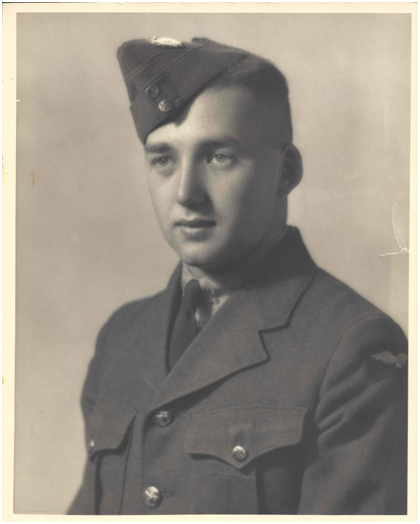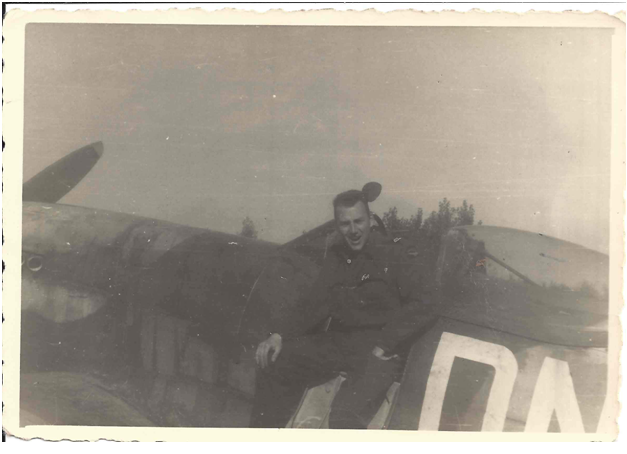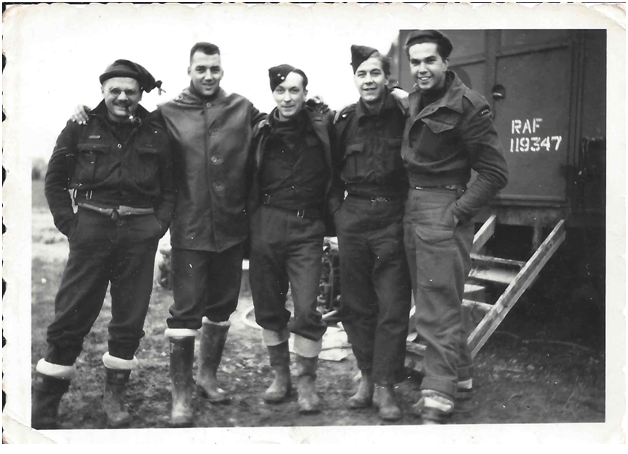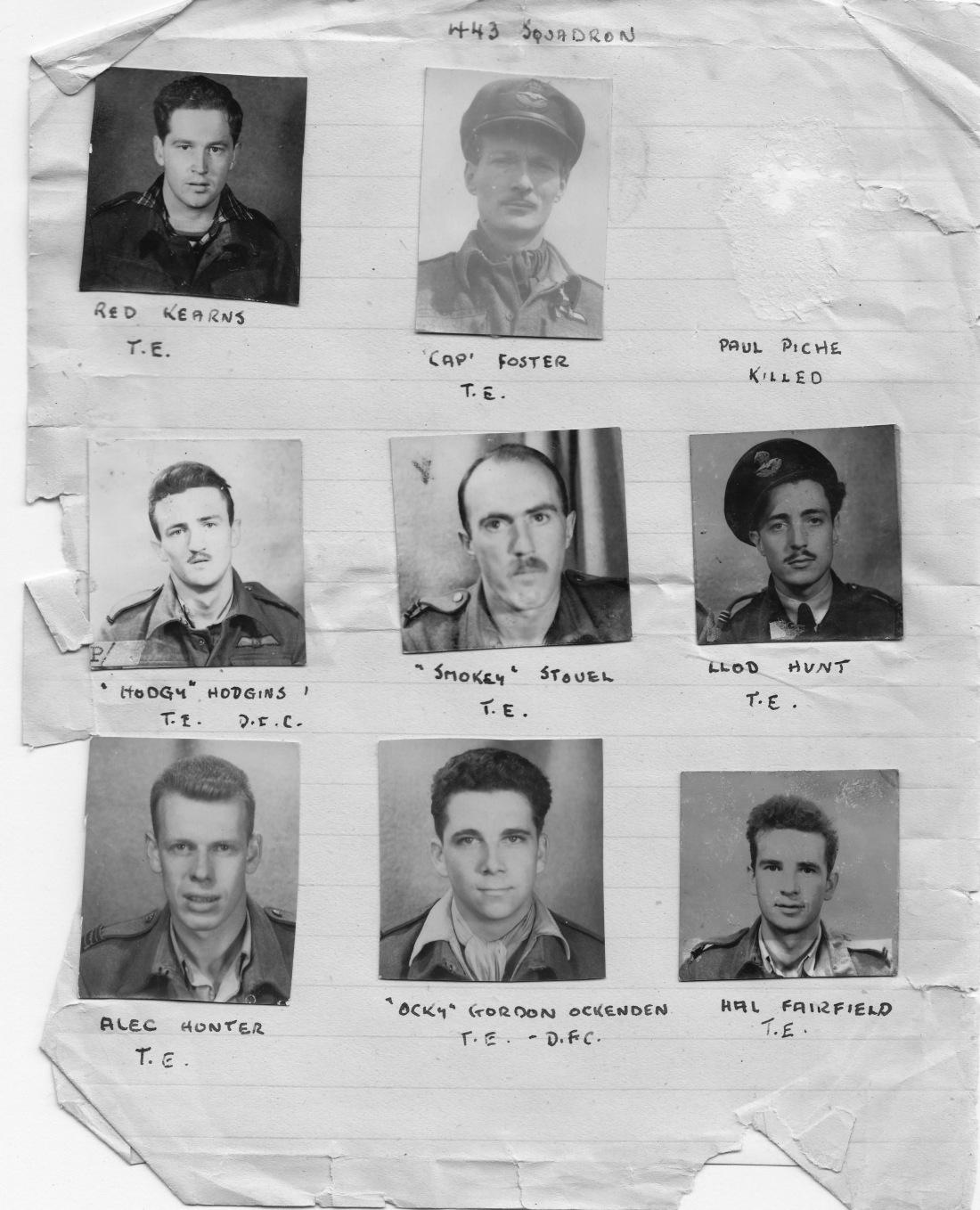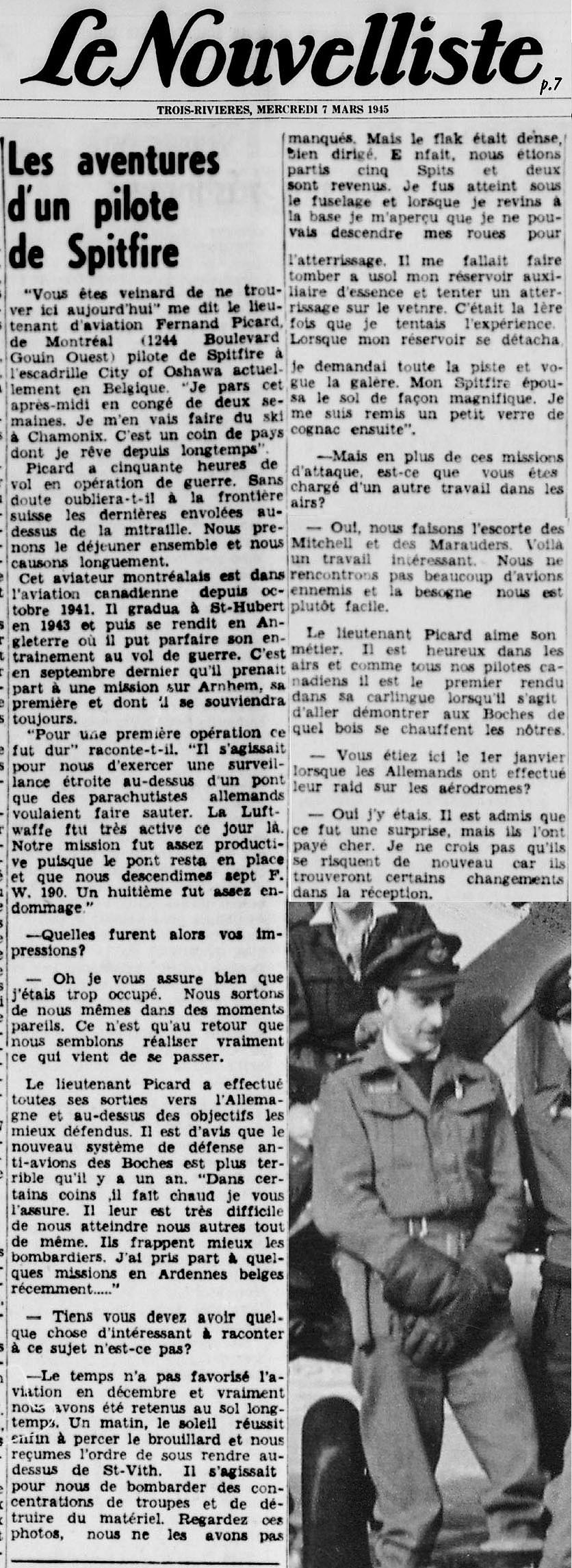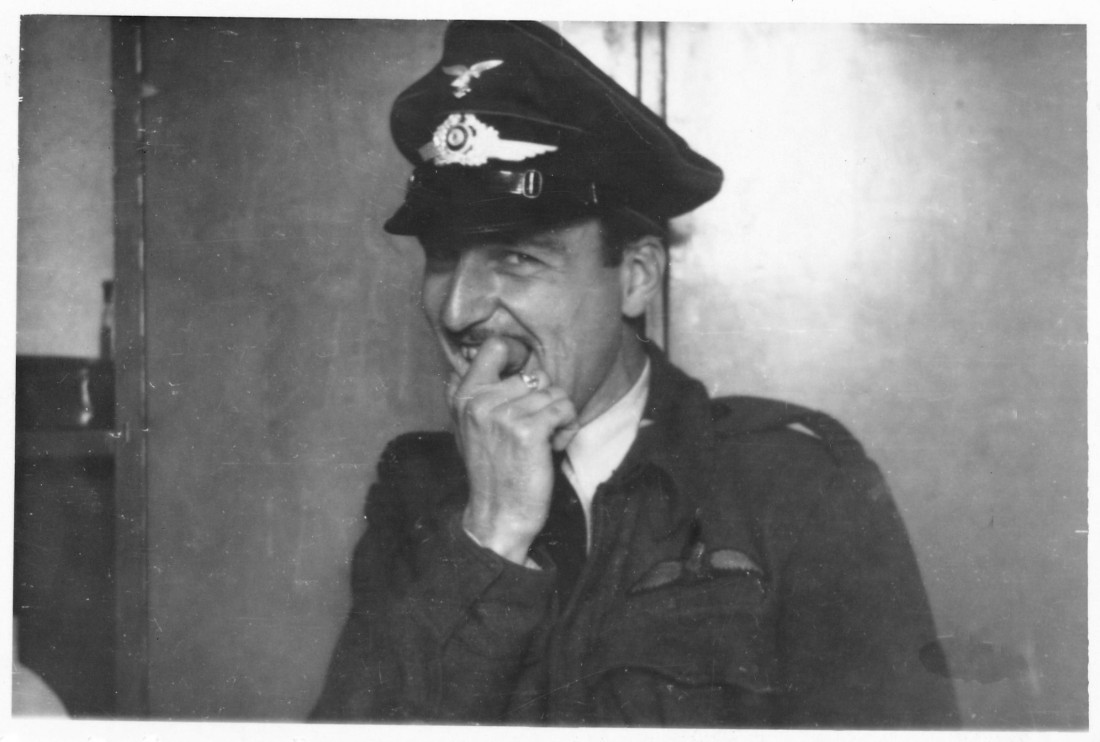
Meeting Holt Horner My Husband – By Yvonne Nys
I am not sure of the exact date, but it was in September 1944, when I met Holt. Brussels had been liberated but the War was still going on. Supplies were still being rationed, but one could get butter in the country. Uncle Octave owned a grocery store in a village near one of the largest airfields in Belgium. At his store, he made and sold wonderful ice cream before and after the war.
One weekend, I was told that he had butter for us, so I went to get it. My uncle’s house was always open to everyone, and he had invited two airmen, a Canadian and a Scot stationed nearby at the airfield, to his house for supper.
The Canadian soldier, Holt, had procured a pair of army boots for my uncle and as a way to say thank you they had invited the two to their house. Holt’s friend was an engaging blue-eyed blonde and I was taken with him, but I found out that he was engaged and going to live in Australia after the war.

Paris 45, Frank wearing a friend’s (Andrew) beret – the friend Yvonne met the day she first met Frank
At supper time, I sat between Andrew and Holt, and we had lots of fun with my little knowledge of English and Holt’s French (he had lived in the east end of Montreal). We had a great time together. Holt and I talked and went for walks and, when we said goodbye, we exchanged addresses.
One evening toward the end of November* when I arrived home from the office, my father was waiting outside the apartment building where we lived. He was all flustered and said that a soldier was waiting for me upstairs. I couldn’t imagine who it was since I really didn’t know any soldiers.
There, Holt was talking with my mother (who loved him at first sight and so did l!).
He told us that his squadron, 416, had been bombed out somewhere in Holland. The squadron had lost most of its airplanes and had suffered a high number of casualties. They had been sent back to the airfield in Brussels to recuperate and wait for new planes and personnel.
This is when our romance began…
He remained stationed in Brussels for four months, and he was at my house practically every day. I saw Holt almost every night. Brussels was designed as a rest and recreation city so we went to the movies, and the American Club 21 (they allowed Canadians, but not the British). It was wonderful. We walked, talked, went to movies and to dances with the big bands, etc., etc.
If I was not home, he simply would go to my grandmother’s house and wait there, often sleeping in her bed during the daytime when I was working (he was always tired). It was an exciting time – the most exciting time of my life. Holt stayed at the airfield near Brussels from September to March.
In the Spring of 1945, a new squadron was formed, and Holt was again on his way to the war scene. I didn’t hear from him for several days until he surprised me one day by turning up at my doorstep. He had gone further into Germany and then hitched a ride on one of the lories without a leave pass! He said he could stay for a few days. We hoped the War would end soon but didn’t know when.
A couple of days later, we woke up and there was an immense roar in the sky. When we looked outside, the whole sky was filled with planes. There was plane after plane. Each plane was pulling a glider filled with soldiers. You could see them standing at the door ready to jump as soon as the gliders reached their destinations. It was an unforgettable sight. Magnificent!!! That was the beginning of the end of Hitler.
Holt knew immediately that the time had come for an offensive, and he left at once in order to reach his squadron, which was now stationed in Holland. Technically, he was away on leave without permission at that time.
What my parents thought about Holt – By Yvonne
My family took to Holt right away. He was handsome, considerate and all my family loved him. Not only my parents, but both sides of my family, thought he was the greatest. My mother was his greatest admirer. He was like the son she never had, although I think she was afraid what would happen when he was sent back to Canada at the end of the War.
She was happy that I had some fun in my life again. Holt enjoyed sharing in my family life. My impression was that his family life was not what he would have liked it to be, and his family had fights all the time. In his last letter, he wrote “I have always considered that my actual life began with my courtship and marriage and so it has been throughout my married life.”
We kept in touch by writing to each other, and I still have the letters. When Germany capitulated, Holt was in Hamburg, Germany, and wrote that he had spoken to the padre about our getting married. We had never discussed marriage before, and he never asked me whether agreed!!!
Shortly after, I received a phone call from somewhere on the Belgian coast. It was a civilian telling me that he had been asked by a Canadian to give me the following message: “Could come to the Belgian seacoast the next day? Holt was being sent to England and from there back to Canada.” Of course, I didn’t hesitate.
My mother said to me that she wanted me to be happy and that she wanted me to make the decision because either way she didn’t want to be blamed if I were unhappy.
When we met, Holt told me that he was going to try to get permission to come back to Brussels to get married. This must have been early December 1945. I didn’t hear from him, but a few days before Christmas he returned to Brussels with a ten-day pass to get married. We spent several days trying to get all the papers together, running from one office to the other. In Belgium at the time, the law stipulated that a civil ceremony had to precede the religious one. We ran into a problem because I was Catholic and he was Protestant. The church dispensation from the Vatican would have taken weeks to obtain, so we simply opted for a civil marriage. Holt had problems getting all the necessary papers because the military wasn’t too keen about these wartime weddings.
The day before we had planned to get married, Holt realized that he had left one of the papers at the military offices downtown!!! It was after closing time, but when he arrived at the offfice, the soldier guarding the building said with a big smile: “I have a letter for you. The office said you might be back for this.”
The following day, December 29, 1945, we were married at City Hall.

I didn’t wear a wedding dress, but I wore a handmade dress. We didn’t have many coupons for clothing purchases, and really didn’t care much for the dress. One of my aunts, Zinneke, had been able to prepare a very nice lunch. It was a small wedding with about 11 people attending (my mother, father, maternal grandmother, two neighbours as witnesses, my Godmother Yvonne and her husband Guillaume, Aunt Millie and her husband Max, Aunt Zinneke and Uncle Auguste (my father’s eldest brother)). The next day we went to visit my Uncle Octave, the uncle who had introduced us. Two days later, Holt was sent back to England and then to Canada.
Although we were married in December 1945, it wasn’t until September 1946 that I was allowed to follow Holt to Canada. I received notice that my trip had been arranged and that I would be leaving within a few days. My voyage on the ship Aquatania began in Antwerp. After many seasick days crossing the Atlantic, I arrived at Pier 21 in Halifax.
On the ship, the war brides received rich food that we hadn’t had in years, including chocolate, and many of us became ill. From Halifax, we embarked on trains for the trip to Montreal. It took us three or four days. When Holt met me in Montreal, I almost didn’t recognize him because I had never seen him in civilian clothes.
Note *
Probably after the attack of the Luftwaffe on January 1st, 1945
To contact me please enter a comment or use this contact form.


